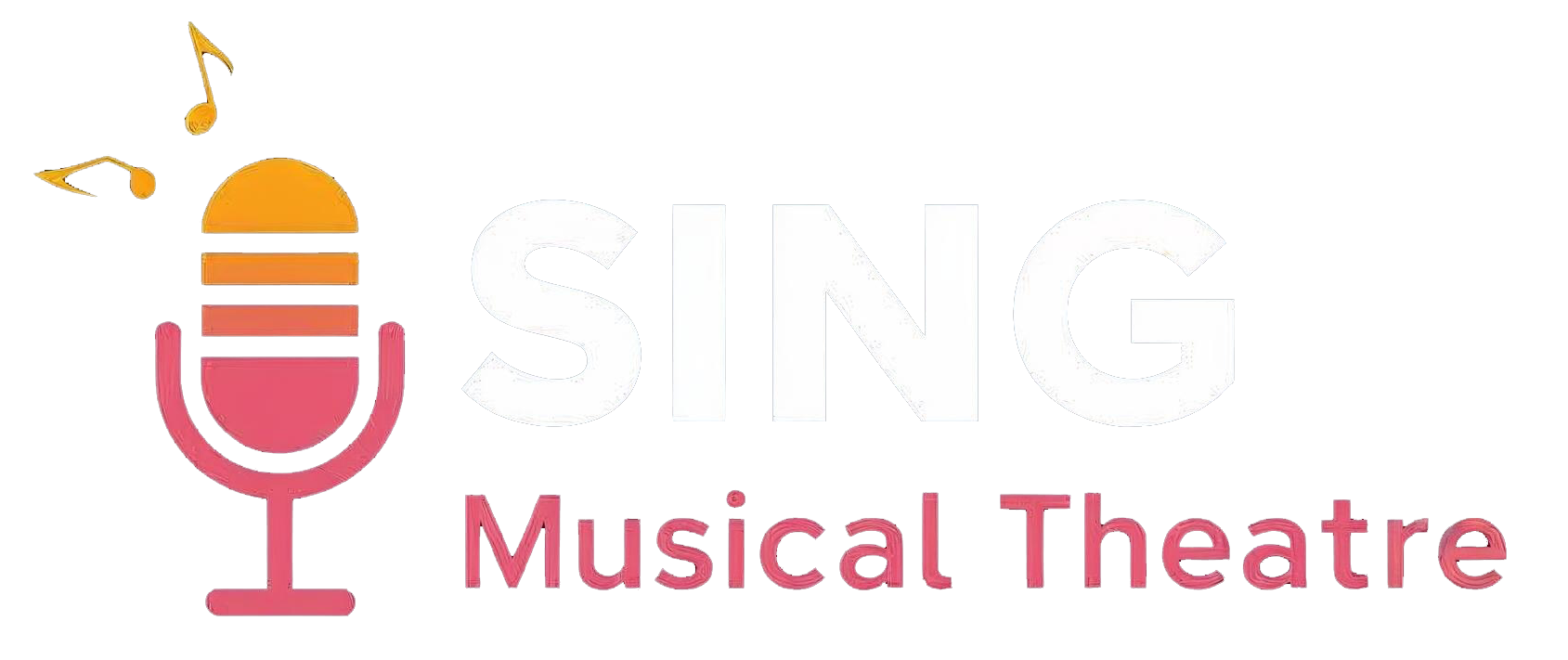Healthy Belting in Singing: What Is Belting, How to Belt Healthily & Technique
Belting is the most thrilling, high-energy sound in musical theatre. When done with a healthy belt, it’s safe, powerful, and career-defining. This guide explains what is belting in singing, belting technique, and how to belt healthily so you can stand out in auditions and performances.
What Is Belting in Singing?
What is belting in singing? Belting is a powerful, speech-like way of singing where the chest voice quality is carried higher into the range than in classical singing. Belting feels like a strong, spoken call but with pitch and resonance. It is often described as the “high chest voice,” though in reality it blends chest and head registers. The sound is bright, intense, and cuts easily over orchestration without amplification.
What does belt in mean in singing? In practice, “to belt” means to sing with maximum intensity and clarity in the upper range while keeping the vocal folds and resonance coordinated. It is not shouting. A belt in music is a deliberately trained, healthy sound that communicates urgency, passion, and drama.
The History of Belting in Music
Belting has roots in vaudeville, folk traditions, and early Broadway, where singers needed to project over orchestras without microphones. Ethel Merman became the iconic model of Broadway belting in the 1930s and 40s, setting a standard for power and brass. Over time, belting evolved with the rise of rock, pop, and R&B influences, leading to the diverse belt sounds we hear in contemporary musicals like Wicked, Dear Evan Hansen, and Six.
In academic settings, belting was once considered unhealthy. Today, thanks to voice science and pedagogy from researchers like Jo Estill, belting is recognized as safe and sustainable when taught properly.
The Physiology of Belt Singing
Belting technique engages specific muscular and acoustic strategies:
- Chest Voice Dominance: The thyroarytenoid (TA) muscles remain active, giving the sound weight and speech-like quality.
- Higher Larynx Position: The larynx sits slightly higher than in classical singing, shortening the vocal tract and brightening resonance.
- Twang and Forward Resonance: Narrowing the aryepiglottic sphincter creates “twang,” boosting projection without strain.
- Firm Vocal Fold Closure: The folds resist airflow, preventing breathy or weak tones.
- Acoustic Matching: Belters often choose spread vowels like [æ] (“cat”) or [eɪ] (“day”) to align harmonics and carry power.
Belting is not about pushing air. In fact, airflow is less than in breathy singing. The sensation should be buoyant, free, and forward, not heavy or pressed.
Learn more about airflow and breath in our guide on breathing and support.
Common Myths About Belting
- Myth 1: Belting is yelling.
Truth: Belting uses controlled resonance and muscle balance, not throat strain. - Myth 2: Belting always damages your voice.
Truth: Research shows belting is as healthy as any style when taught correctly. - Myth 3: Only women belt.
Truth: Male singers also belt, often blending chest and mix to create a high, powerful sound. - Myth 4: Belting is only for loud songs.
Truth: Belting can be dynamic, expressive, and used for storytelling as much as power.
How to Belt Healthily
Learning how to belt when singing starts with coordination, not force. Here are the keys to a healthy belt:
- Breath Management: Engage support muscles without over-pressurizing the throat. See Breathing & Support.
- Forward Placement: Aim sound into the “mask” (nose, cheeks, eyes) for resonance.
- Twang: Use a bright, narrow resonance to amplify sound safely.
- Mixing Registers: Blend chest and head voice to avoid a harsh break.
- Healthy Vowels: Use bright vowels to line up harmonics naturally.
- Posture and Alignment: A free body supports a free voice. See Posture.
The goal of a healthy belt is intensity with ease. If belting feels tight or painful, it is not healthy.
Exercises for Belting Technique
Try these progressive exercises to build belting strength safely:
- Speak-Then-Sing: Speak a phrase strongly on pitch, then sustain it. This builds speech-like belting.
- “Nay-Nay-Nay” on 5-Note Scales: Add twang and forward resonance.
- Sirens: Slide from chest to head voice, blending registers.
- Vowel Brilliance: Sustain [æ] or [eɪ] at mid-high pitch, focusing on brightness.
- Belting Sustain: Hold mid-range notes at strong volume with breath support.
For a complete routine, see our Vocal Warmups.
Belting in Auditions and Performance
In auditions, belting is often the deciding factor. Casting directors want singers who can project emotion and power. Songs with belt moments often “wow” in 16-bar cuts. Belting also makes performances unforgettable, from Elphaba’s “Defying Gravity” to Rent’s “Seasons of Love.”
Learn to choose the right material in our Repertoire Guide.
Belting Across Genres
Though rooted in Broadway, belting spans pop, rock, gospel, R&B, and folk. Pop icons like Adele and Beyoncé use belting in their choruses. Belting in music bridges classical training and commercial styles, making it versatile for singers who want to work across genres.
Belting and the Developing Voice
Adolescent singers must approach belting carefully. Young voices can explore light belting in mid-range with supervision, but pushing too early can cause strain. Teachers emphasize gradual strengthening and balance between registers. A healthy approach prepares teens for future repertoire without damage.
Problems from Unhealthy Belting
When belting is forced, problems arise:
- Vocal fatigue after short use
- Hoarseness or loss of range
- Shouty, pressed sound with no resonance
- Risk of nodules or long-term damage
The cure: learn how to belt healthily with guidance, not strain. A healthy belt feels sustainable, resonant, and thrilling.
Repertoire for Learning to Belt
Want to practice belting? Choose songs that build gradually:
- Defying Gravity – Wicked
- Don’t Rain on My Parade – Funny Girl
- Gimme Gimme – Thoroughly Modern Millie
- Let It Go – Frozen
- I’m Alive – Next to Normal
For younger singers, start with mid-range pop-rock tunes before moving to heavy Broadway belting. See our Audition Repertoire Tools.
Conclusion: Why Belting Gets You Jobs
Belting is the epic sound of musical theatre. It thrills audiences, powers ballads, and makes auditions unforgettable. When people ask what is belting singing or how to belt when singing, the answer is simple: belting is safe, powerful, and essential when done with technique and artistry. Learn to belt healthily, and you’ll unlock one of the most important tools in your career. Singers who can belt well get jobs—and keep them.

